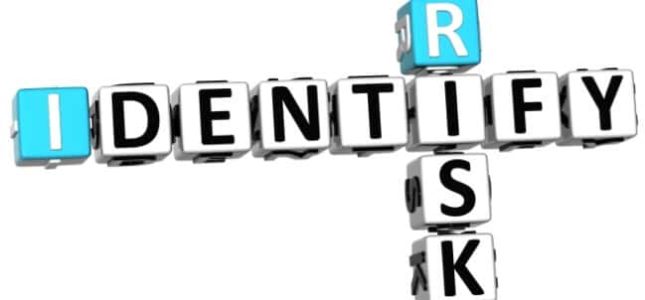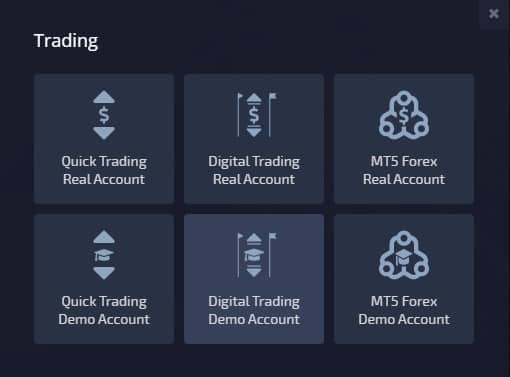What is risk management?
It is necessary to understand that risk is associated with everything in our life (accidents, illnesses, etc.).
Investments in general, and Binary Options in particular, also have an associated risk. The value of this risk can be measured, and normally the bigger the risk the bigger the potential profit.
Using a bank deposit as an example, we can say that the risk is low, and so is the return or profit.
When we talk about investments that we are managing (trading) ourselves, then we need to know how to manage the risk. Risk management is important for investments in the stock market, in Forex, in Binary options or any other financial instrument.
The basics of risk management are understanding and evaluating the following:
– What is the value of my portfolio
– What percentage of my portfolio that can be exposed, or at risk, in every trade
– In the case of Stop Loss and Take Profit parameters, where should they be placed (this does not apply to binary options)
– Which financial leverage do I use (this does not apply to binary options)
In the case of binary options, as you can see by the above, risk management is simpler because we only we have to calculate what value to invest, taking into account the value of the portfolio.
If for example, we were trading in FOREX, we would have to tak e into account Stop Loss and Financial Leverage, in addition to the value of the Percentage-in-Point, etc.
This is why I think an inexperienced trader must first learn to trade binary options and not FOREX, or other more complex financial instruments.

How to manage risk in Binary Options?
Taking into account the value of my portfolio I should calculate the trade as follows:
a) Experienced Traders – Each order should be worth 5% to 10% of the portfolio. If I have an account with $500 each order should be valued at $25 to $50.
B) Inexperienced Traders – Each order should be worth 1% to 2% of the portfolio. If I have an account with $500 each order should be valued at $5 to $10.
For this reason, when choosing a broker you have to keep in mind two very important things for your risk management:
The minimum trade value in the Broker
The amount you intend to deposit
Example of a Broker with low trave value: IQ Option
Imagine that the value of a minimum transaction is $ 25 and you want to deposit $ 250. Each transaction would be at least 10% of your account, which is well above that 2% maximum for a beginner.
Operating with 10% was going against the rule of risk management. The other solution to continue to respect risk management in this same broker would be to increase your deposit.
As a trader learns and acquires experience, he can increase the value of the orders because the chance of losing those orders will be smaller.
One of the reasons for using risk management is to avoid the total loss of the portfolio.
Imagine that you are an inexperienced trader and that you have an account of $100.
Imagine further that every order that you place has a value of $25. This means that if you have a loss on four consecutive orders, you will run out of money.
It’s not normal to have a loss on so many consecutive orders, but it can happen.
But if you have an account with $250, and you place a $5 (2%) order, if you have a loss on those four consecutive orders, you only lost $20, and still have $210.
Risk Management = Protection of your account
The idea of risk management is to know how many losses I can have without putting the account at risk, thinking that the more inexperienced I am, the more likely I am to have losses on trades.
Of course a lower risk implies a lower profit as explained at the beginning of the article. A $25 order returns more profit than a $5 order.
I am of the opinion that it is preferable to earn less and have less risk than to risk too much and end up losing the money.
Many people who complain of Binary Options, FOREX, or even the Stock Market, do so because they lost their money.
In many of these cases, it was incorrect risk management that led to the account’s rapid loss of control.
It is important to realize that in a $250 account if I trade at $25 each time, and I have two losses in a row ($50), it corresponds to 20% of my account.
It is very easy after that to become afraid and not do things rationally which usually leads to losing the remainder quickly.
And of course, then it’s easier to say it’s all a scam or a fraud than to admit that emotions and risk mismanagement got the better of us!
I would like to remind you again of my advice:
If you have losses on 3 consecutive orders, stop trading. Analyze the trades with losses.
Check if your strategy is failing, or whether it needs some adaptation. Come back the next day.
Suggested Posts for You
- CoinTech2u

- Money Muling

- Spot Grid Trading from Binance

- Best time to trade pocket option

- 6 Ways to Make Money Online

- Pocket Option







